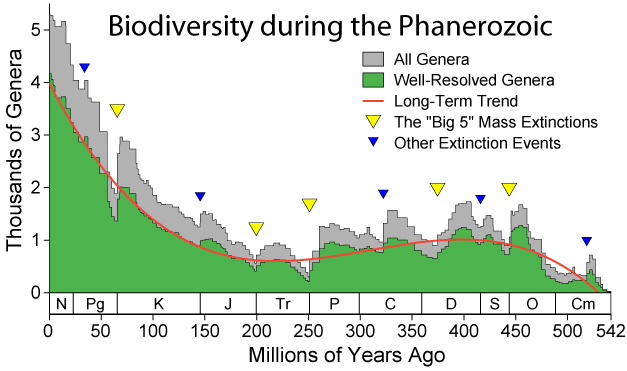Biodiversity & the Fourth Nature

The creation of a Fourth Nature is a response by landscape architects to the Sixth Extinction. Planting designers should forsake the Middle Landscape:
- garden planting can contribute to biodiversity objectives
- habitat creation does contribute to biodiversity objectives
- landscape architects should stop creating a middle landscape. Cities should remove their pointless expanses of tough low-maintenance shrubs. Ban the Berberis. Boycott the Laurel. Remove the Rugosas. Replace the splurges of shrubs which disfigure our roads and car parks with Fourth Nature planting.
Biodiversity may be defined as ‘the totality of genes, species, and ecosystems of a region’. Scientists believe the rate of species loss to be greater now than at any time in human history. Species extinctions are occurring at several hunderd percent above background extinction rates. It is a tragedy. Landscape architects can make a small but important contribution to slowing our planet’s loss of biodiversity. As Ahern et all write: ‘If habitat loss is the leading cause of biodiversity decline, it follows that planning and design will be essential in any viable solution by directly conserving, protecting, or managing landscapes and habitats’. (Biodiversity Planning & Design: sustainable practices Jack Ahern, Elizabeth Leduc, & Mary Lee York Island Press 2006 p.3).
Landscape architects may wish to take a cultural view of the problem. The Roman writer Cicero wrote of a second nature (alteram naturam) which we call the ‘cultural landscape’. He meant the landscape of agriculture and cities. Though he was not explicit, it is evident that his concept of the first nature was the world before humans. Hunt further explains that ‘in sixteenth-century Italy, when gardens began to flourish and be elaborated as never before, this art was likened to a third nature by various commentators; one of them, Jacopo Bonfadio, wrote of gardens as being ‘nature incorporated with art’ (Gardens and the Picturesque: Studies in the History of Landscape Architecture MIT Press 1994 pp.3-4
By John Dixon Hunt).
Aesthetic appreciation of wild nature, and its incorporation in gardens, became common during the eighteenth century. Habitat creation by landscape architects for ecological reasons dates from the second half of the twenty-first century and can be viewed as the creation of a fourth nature.
The World Wildlife Fund for Nature (WWF) is an international NGO concentrating on conservation the three most biodiverse biomes : forestry, freshwater ecoysytems and oceans and coasts, go to http://www.wwf.org/ (accessed 31/1/2013) for the international website which leads on to local websites. Every two years WWF publishes the Living Planet Report which reports on biodiversity and also on biocapacity and human ecological footprint. http://wwf.panda.org/about_our_earth/all_publications/living_planet_report/ (accessed 31.1.2013). WWF also promotes the One Planet Living project http://www.oneplanetliving.org/index.html (accessed 31.1.2013) which promotes ten sustainability principles.
The International Union for the Conservation of Nature (IUCN) http://www.iucn.org/ (accessed 31.1.2013) offers conservation databases and action tools. Most countries have its own specialist agencies and NGOs as well, such as in Britain the government agency, Natural England http://www.naturalengland.org.uk/ (accessed 31/1/2013). In the States nature conservation tends to be state based so country-wide there is the Nature Conservancy http://www.nature.org/ (accessed 31/12/2013) which gives an overview.
